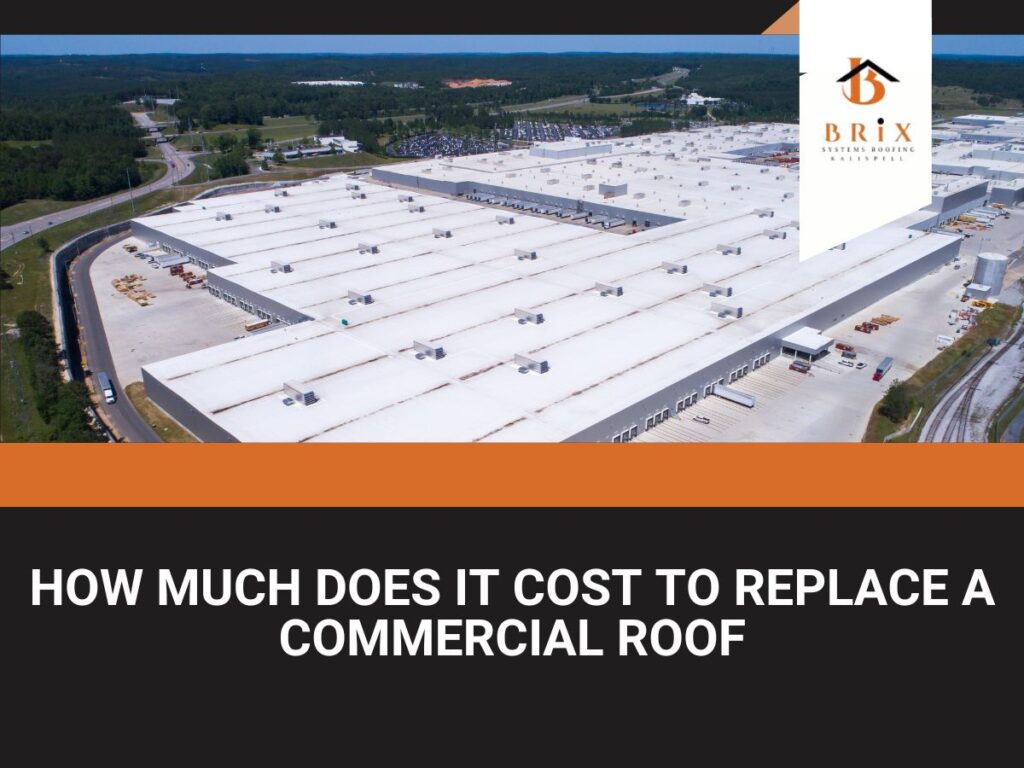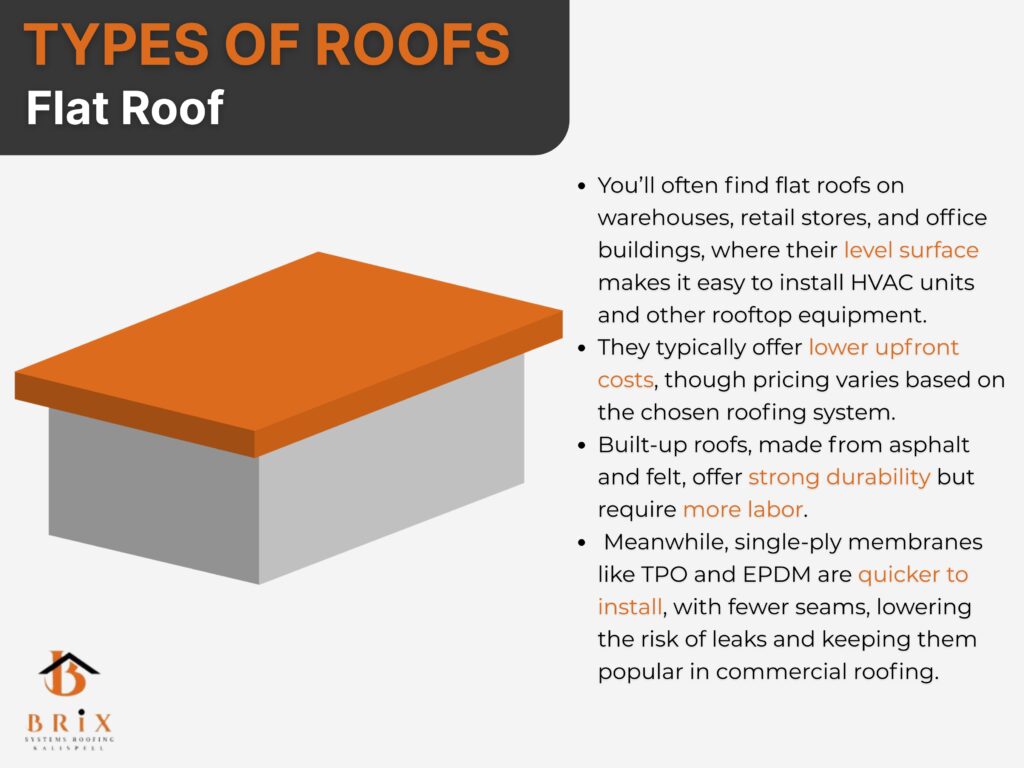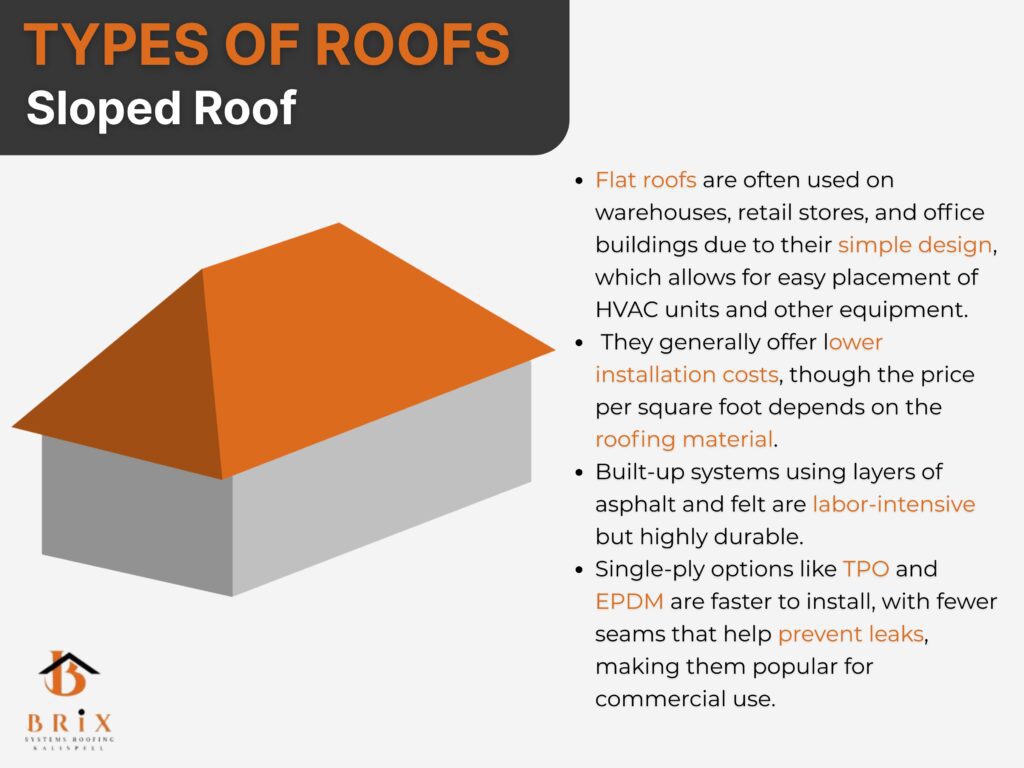
Replacing a commercial roof isn't something you look forward to, but it is a decision that can't wait too long. Your roof keeps your business running smoothly, protects what’s inside, and helps maintain energy efficiency throughout the year.
But once repairs stop working, how much is this going to cost? You might hear figures thrown around from the low tens of thousands to six figures.
But knowing what actually shapes those costs can help you make confident decisions.
It’s easy to assume that replacing one commercial roof costs about the same as the next, but that rarely holds true. You might get one quote that feels manageable, then another that nearly doubles the price, all for what seems like the same job.
The real cost often has less to do with the roof itself and more with everything around it. The layout, age, location, and even purpose of the building can all influence how a roof should be replaced.
Commercial properties come in all shapes and sizes. Some buildings have wide, open roof spans, while others are broken up with HVAC units, skylights, vents, and satellite dishes.
All of these change the way a roof needs to be replaced. Even a small warehouse can become a more expensive project than expected just because of what’s sitting on top of it.
Older structures might need additional prep work or reinforcement before a new roof can go on. That adds labor and time to the project.
You’ve probably guessed that bigger roofs cost more.
More complex layouts can also mean more safety gear for the crew, more planning for water drainage, and more time spent staging materials. All of that shows up in the final quote.
You may notice that roofing contractors often ask what kind of system you have or what you’re hoping to switch to. That’s because roofing materials vary not just in price, but in how they perform in different climates or building types.
Some materials are better suited for flat roofs, while others are chosen because they reflect heat or resist chemicals from rooftop exhaust. The difference in cost between a basic single-ply membrane and a more specialized system can be thousands of dollars, even before installation begins.
Materials also affect how long the replacement lasts, how it performs during storms, and what kind of maintenance it needs over time.
Replacing a commercial roof is a major investment, but that doesn’t mean your only option is to accept the highest price and move on. Some systems are quick to install and easier on the budget, while others come with a higher price tag but offer longer-term benefits.
There are ways to reduce costs without risking poor workmanship or settling for low-quality materials.
Flat Roofs

Flat roofs are often seen on warehouses, retail stores, and office buildings. They make it easier to place equipment like HVAC units up top and usually keep installation costs on the lower side.
Depending on the material you choose, the price per square foot can vary. Built-up roofing systems, which layer materials like asphalt and felt, tend to cost more in labor but offer solid protection.
Single-ply systems like TPO and EPDM are faster to install and come with fewer seams, which helps reduce leaks. TPO tends to cost slightly more than EPDM, but both are widely used and fairly budget-friendly for most commercial buildings.

You might not see them as often on large commercial properties, but sloped roofs still show up in many industries, especially on buildings like schools, churches, or medical centers.
These roofs are harder to work on and often require more safety precautions during installation, which drives up labor costs. Pitched roofs also use materials like shingles, tiles, or standing seam metal panels, all of which cost more than most flat roofing materials.
However, they usually last longer and shed water more effectively, which may help reduce repairs over time.
Materials like metal roofing are often chosen for their longevity and ability to reflect heat, especially on buildings where energy efficiency matters. But metal can also be one of the most expensive options up front.
Standing seam systems, in particular, involve more complex installation and specialized materials. TPO is commonly selected for its balance between performance and price.
It reflects sunlight, handles various weather conditions well and doesn’t break the bank for most mid-sized roofs. EPDM, which is rubber-based, tends to cost a bit less and holds up well in cooler climates.
You might look at your building and assume the cost of a roof replacement should be fairly predictable. However, what ends up on the invoice often includes more than just materials and labor.
Some of these extra costs are based on what the contractor finds once the work begins. Others are tied to where your building is located or how accessible the roof actually is.
Once the old roofing system comes off, the condition of the deck underneath becomes clear. If it's soft, rotted, rusted, or damaged, it can't support the new system safely.
Replacing sections of the deck adds cost, time, and materials to the project. Moisture is often the biggest cause.
A small leak that didn’t seem urgent before might have caused widespread water damage under the surface. Mold, mildew or weakened insulation can show up and trigger more cleanup than you expected.
Some buildings are easy to work on. Others are surrounded by tight alleys, overhangs or landscaping that makes it harder to get equipment in and out.
If the roofing crew has to move materials by hand, use cranes, or work around odd building shapes, it adds more to the labor side of the bill. The height of your building also matters because a two-story office is easier to navigate than a 12-story structure.
Safety setups, equipment rentals and additional crew members are sometimes required just to move materials up and down.
Cities and counties all have different building codes, permit fees and inspection timelines. Some areas require specific types of materials or extra insulation to meet updated energy codes.
These aren’t optional, and the cost of meeting them lands on you as the building owner. Labor rates also vary, as a contractor working in a major metro area often pays more for skilled crews than one in a smaller town.
Those higher wages show up in your estimate, even if the materials are exactly the same. Climate plays a role too. Roofs in hurricane-prone zones or areas with heavy snowfall often need added features that increase the price.
It’s easy to look at a roofing estimate and focus only on the total. A replacement project has a whole process that supports the finished product.
Each part of the cost serves a purpose, from safety prep to cleanup.
The type of material you choose has one of the biggest effects on the overall price. Higher-end systems naturally cost more, but so does the quality of insulation, fasteners, flashing and sealants that come with it. Even the thickness of the roofing membrane can affect cost.
Some materials also come with longer warranties, better energy performance or added resistance to heat and chemicals. Paying more for materials can sometimes reduce long-term maintenance, but only if they match your building’s needs.
Installing a commercial roof takes experience to work safely, handle complicated layouts and apply each layer the right way. Labor costs reflect that skill.
Projects that involve complex systems or high-risk conditions require larger or more specialized crews. And depending on your location, the contractor may need to bring in certified installers to meet manufacturer requirements.
Those extra steps keep your warranty valid, but they also add to the final price.
Most commercial roof replacements can’t move forward without permits from the local municipality. These fees are rarely included in the initial quote unless you ask, but they’re a necessary part of doing the job legally and up to code.
Depending on your city, the cost can vary significantly. On-site inspections and safety measures also come into play.
Crews may need to install temporary railings, harness systems, or additional barriers if your building remains open during construction.
Removing an old roof is labor-intensive and time-consuming. Depending on how many layers your current system has, the tear-off process can take just as long as the installation.
Then there’s the matter of hauling it all away and disposing of it properly. Some materials must be recycled, others need special handling.
Roofing debris can be heavy, messy and full of nails or sharp edges, so it can’t just be tossed in a dumpster without planning. The cleanup process adds time and cost, but skipping it isn’t an option.
When trying to get a sense of what your roof replacement might cost, square footage is usually the first number that matters. Most commercial roofing estimates start with this measurement, and you’ll likely hear prices quoted by the square foot.
Square footage gives you a place to begin, not an exact answer. It can help you rule out unrealistic estimates and spot ones that are far too low to be accurate.
In most areas, a commercial roof replacement can fall somewhere between $5 to $12 per square foot. That number can go higher with premium materials or complex installation needs.
For basic single-ply systems like TPO or EPDM, you might land in the lower to mid part of that range. Built-up or metal systems often sit toward the higher end. Those square foot prices usually include materials and labor, but they may not include tear-off, permits, or added insulation.
That’s why it helps to clarify what’s included before assuming the total cost. Some contractors keep their per-square-foot rate lower by separating other expenses into line items.
To make this a bit more real, let’s say you have a 5,000-square-foot roof and receive a quote at $7 per square foot. That’s roughly $35,000, assuming the structure is straightforward and material costs are average.
A larger building, like one with 20,000 square feet, could land closer to $140,000 with the same rate. Now, if your roof is unusually complex or needs upgraded materials, that rate could climb to $10 or more per square foot.
For a mid-size building, that could raise the estimate by tens of thousands of dollars. These aren’t exact figures, but they can help you build a more grounded budget before reaching out to contractors.
Even if you trust your contractor, getting multiple estimates helps you make sure nothing’s been missed. Two qualified companies might look at the same roof and price it differently, based on how they plan to approach the job or which materials they recommend.
That doesn’t mean one is wrong, just that they may be seeing different challenges or using different methods. You also get the chance to ask better questions.
One contractor might flag an issue the others didn’t mention, giving you more insight into your building’s condition.
Replacing a commercial roof involves more than just materials and manpower. The longer a project takes, the more it can affect your operations, tenants, or employees.
That’s why asking how long it actually takes to tear off and replace a roof matter. Time impacts everything including labor costs, disruption, safety logistics, and even how many days you're paying for extra equipment on-site.
When you know the typical timeline for a full roof replacement, you get a clearer idea of how the costs break down. Fast-track jobs might cost more in labor, while drawn-out timelines could raise the risk of weather delays or schedule conflicts.